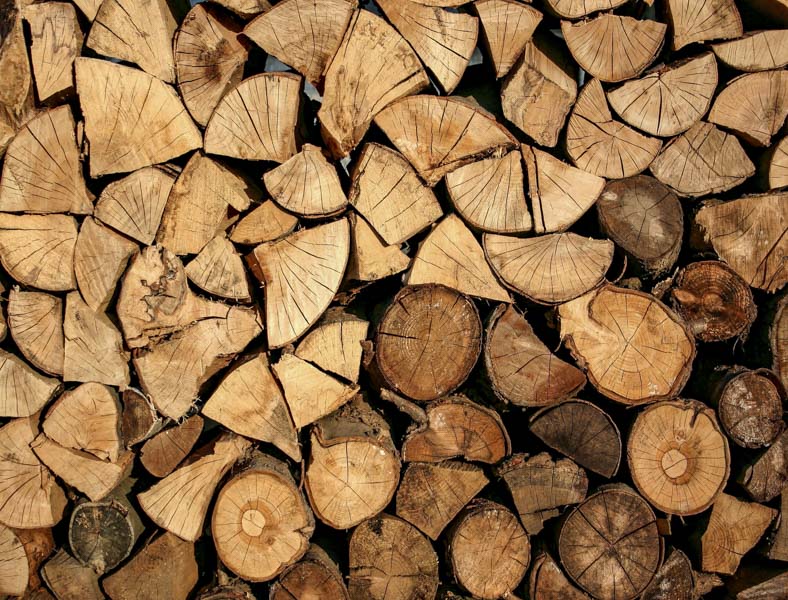The average cost of a cord of wood is $300, ranging between $150 to $500, depending on several factors. Find out more about how much a cord of wood is and how it’s measured.
What is a Cord of Wood?
A cord of wood is 128 cubic feet or 4 feet by 4 feet by 8 feet. People who use wood as a primary heat source are familiar with how much wood is in a cord and how many cords they need to make it through the winter.
When purchasing cordwood, it’s important to know how big a cord of wood is. Most pickup trucks only hold about one-third to one-half of a cord of wood, so if you’re new to purchasing firewood, don’t let anyone fool you.
When You Should Have a Cord of Wood
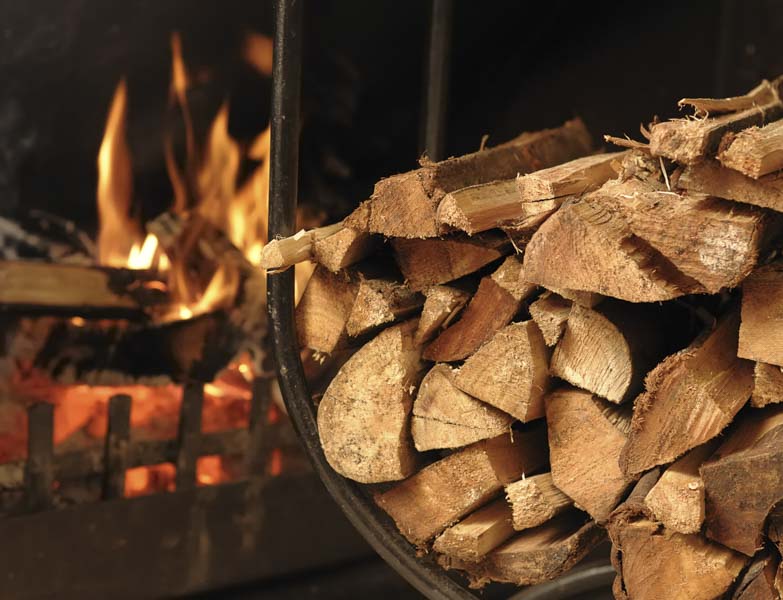
Firewood is a primary heat source for about 2% of homes in the United States. Another 6% of US households use wood stoves as a secondary heat source.
Many homeowners have wood-burning fireplaces for recreational use, either in their living room, backyard firepit, or sauna. Homeowners in cold climates use wood heat during power outages as a reliable backup for extreme weather events.
If you’re considering giving yours a facelift, explore our guide to tiling over a brick fireplace!
Factors in Calculating Costs of Wood Cords
To get your money’s worth, it’s important to know more than just how much wood is in a cord. Several factors help determine the cost of a cord of wood, including the type of wood, location and availability, and delivery fees.
Type of Wood
Not all wood burns the same, and some put out more heat than others. Hardwoods are generally the best but aren’t readily available in all areas.
Here are the most common types of wood for heating, along with characteristics, and BTU (British Thermal Units) ratings.
| Type of wood | Heating Quality | Characteristics | BTUs per cord (millions) |
| Hickory | Very high | Dense wood that burns a long time | 26.7 |
| Oak | Very high | Produces long-lasting heat | 25.7 |
| Maple | High | Suitable for long slow burns | 24 |
| Birch | Medium-high | Easy to split, burns clean | 23.6 |
| Larch | Medium-high | Preferred wood in Northwest forests | 22.3 |
| Douglas fir | Medium-high | Burns well when properly seasoned | 20.6 |
| Pine | Low | Burns fast, leaves sooty deposits | 17.1 |
| Cedar | Low | Easy to split, good for kindling | 12.2 |
Location and Availability
Different tree species grow in various climate regions, so some types of firewood are harder to get in certain areas. In desert climates, firewood is more expensive than it is if you live close to a national forest.
Seasoned vs. Green Wood
Green wood doesn’t burn efficiently, so if you’re heating your home with wood, it’s critical to have a supply of seasoned firewood to get you through the winter. You must allow 6 months to a year for most woods to cure properly, with hardwoods taking longer than softwoods.
Green wood is more readily available than seasoned wood, so it’s usually less expensive. If you have enough time to let it season before winter hits, you may be able to save money by purchasing it while it’s still green.
Length
It’s important to know how long your firewood needs to be to fit in your stove. The standard firewood length is 16 inches because three rows of 16-inch firewood equals four feet, which is the width of a cord of wood.
You could pay more if you need a shorter length, like 12 inches because it takes longer to cut and stack. Likewise, if you burn 24-inch wood, it could cost less.
Delivery and Stacking Fees
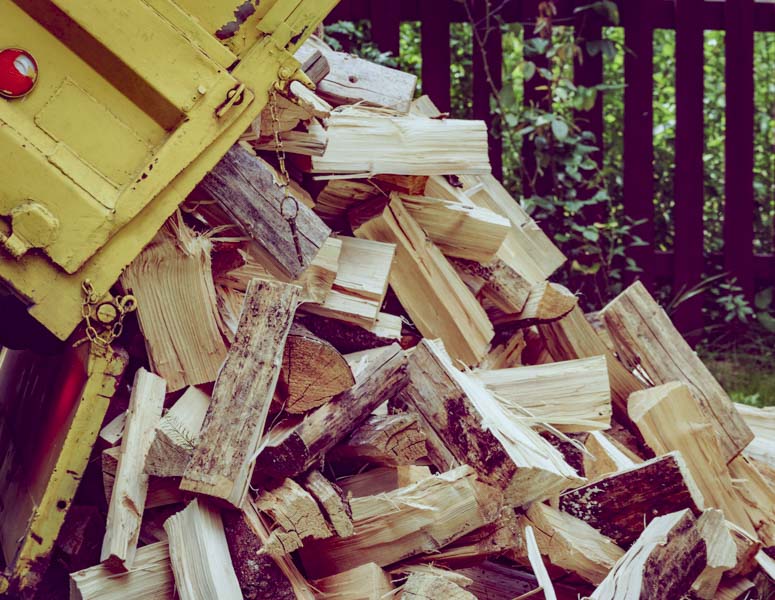
Some firewood merchants charge extra for delivery and stacking fees, usually about $50 to $150 per load. Others include these services in their prices. It’s common for many sellers to stack firewood for senior citizens at no extra charge.
Additional Wood Cord Definitions and Costs
You may wonder how many logs are in a cord, but you don’t measure firewood that way. Here are some additional facts to help you understand cordwood definitions and costs.
Face Cord vs. Full Cord
A full cord of wood is 4 feet by 4 feet by 8 feet. It’s typically stacked four feet high in three rows of 16-inch lengths. These rows are eight feet long, totaling 128 cubic feet.
A face cord is one-third of a cord, or one row of 16-inch firewood stacked 4 feet tall and 8 feet long. The average cost of a face cord of wood is $120 to $200.
Rick vs. Rick Cord
Rick cord refers to the way a cord of firewood is stacked in three rows. It’s the same measurement as a face cord or one-third of a cord. Thus, three ricks equals one cord.
Palletized Wood
Palletized firewood comes in different sizes, and you can measure it by weight or volume. Some common pallet measurements are one-third and one-half cord. A 3x3x4 pallet of wood, which is 36 cubic feet, is slightly less than one-third of a cord.
Palletized wood may be separately wrapped bundles meant to be sold individually. Firewood bundles vary in size and usually cost about $5 to $15 per bundle.
Sometimes palletized wood is sold by weight, usually about 700 pounds. Since various types of wood weigh different amounts, volume is the measurement many prefer. On average, a cord of wood weighs about 4,000 pounds, so it’s easy to calculate how many cords are on a pallet of wood by dividing the weight by 4,000.
Cost of Firewood Per Cord Size
Use this chart to simplify the cost of a cord of wood.
| Wood cord measurement | Cubic feet | Average price |
| Bundle | Usually 3 to 5 logs | $5 to $15 |
| Quarter cord | 32 cubic feet, or 16” x 4’ x 6’ | $50 to $125 |
| Face cord (rick or one-third cord) | 42 cubic feet, or 16” x 4’ x 8’ | $75 to $200 |
| Half cord | 64 cubic feet, or 4’ x 4’ x 4’ | $100 to $300 |
| Full cord | 128 cubic feet, or 4’ x 4’ x 8’ | $150 to $500 |
Wood Cord Costs by Volume
Learn more about price ranges of firewood by region and the average costs of common wood types.
Price Ranges by Region
Determining the going rate in your area takes a little research. Read bulletin boards, social media listings, and classified ads to find out the average cost of a cord of wood in your area.
To prevent the spread of invasive plants and insects, it’s important to buy local firewood. The following price ranges are averages, with several factors influencing the cost of a cord of wood.
| Region | Includes these states | Average wood cord costs |
| Northeast | Maine, Vermont, New York, Connecticut, Pennsylvania | $300 to $600 |
| Southeast | Georgia, Florida, South Carolina, Kentucky, Tennessee | $400 to $500 |
| Midwest | North Dakota, South Dakota, Ohio, Illinois, Minnesota, Michigan | $120 to $400 |
| West | Oregon, Washington, Idaho, Montana, Colorado | $150 to $350 |
| Southwest | California, Texas, Oklahoma, Arizona, New Mexico | $350 to $600 |
Average Costs for Common Wood Types
You generally categorize wood as either hard or soft. Here are the average prices and characteristics of each type.
| Type of wood | Characteristics | Price range |
| Hardwood (oak, maple, hickory, elm) | Takes a long time to season, but it burns hotter and longer | $250 to $500 |
| Softwood (pine, larch, cedar, fir, spruce, hemlock) | Dries faster, and splits easily, but burns faster and puts out less heat | $150 to $300 |
Wood Cord Storage Tips and Tricks
Proper stacking, seasoning, and storing techniques maximize the efficiency and fuel rating of your firewood.
Proper Stacking Techniques
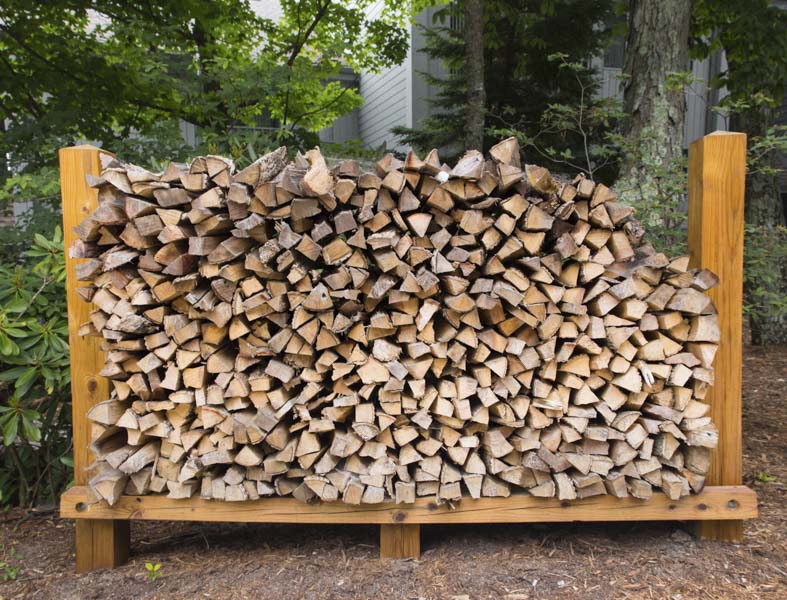
Keeping wood off the ground prevents moisture absorption and decay. Special firewood racks help contain wood in neat stacks, but if you have a wood shed, it also works well to stack it between the poles.
Seasoning and Drying Wood
It’s best to split wood before stacking it so it dries evenly. Hardwood, which takes longer to season, is best stacked in alternating crisscross patterns that allow more air movement to speed up the drying process.
Shelter and Cover Options
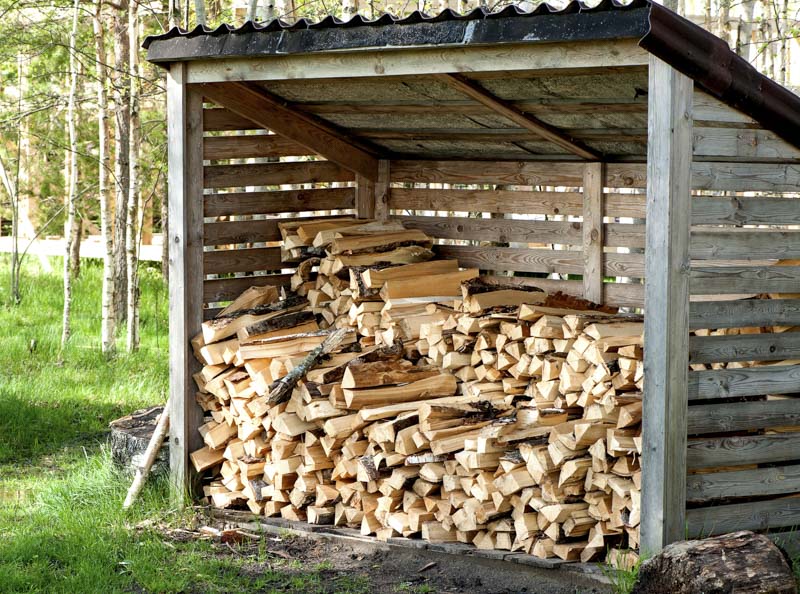
While some people put firewood next to their houses for easy access, it’s best to have wood storage away from your home, as it can cause several problems. Wood attracts pests and rodents, which carry parasites like fleas and ticks.
Wood stacked next to your house also encourages the growth of mold and presents a fire hazard. If you have to follow the rules of a homeowners association, a storage shed works well to store wood. You can also build an inexpensive pole shed with a metal roof to store firewood.
Cost to Cut Wood Yourself vs Professional
Many homeowners cut their own firewood. Find out if it’s worth it for you.
DIY Firewood Cutting
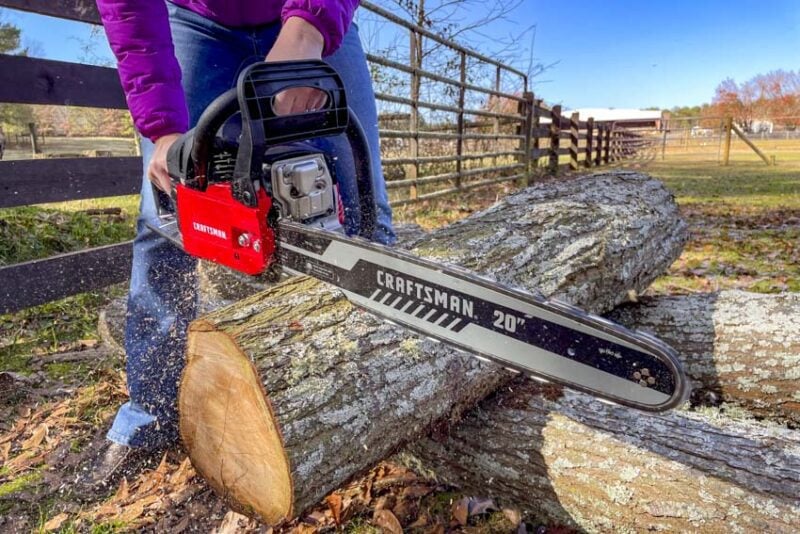
Wood cutting requires equipment and experience, and it’s not for everyone. You must have a chainsaw and a vehicle to haul the firewood. It typically involves getting a firewood permit from a national forest and knowing where to get good firewood.
Are you a Stihl loyalist? Check out our Best Stihl Chainsaw Reviews list!
Hiring a Professional
Many people like to get their own firewood, while others prefer to hire a professional. Running a chainsaw requires physical strength, and it’s a dangerous job.
How to Save Money on Wood
Use these money-saving tips to save money on wood for your home heating.
Buy in Bulk
Purchasing firewood in bulk is one of the best ways to save. If you have the space and a chainsaw, you can purchase a log truckload and cut it yourself to save even more.
Off-Season Purchases
A cord of wood is less expensive when you purchase it during the warmer months of the year. Off-season purchases of cordwood can lower your cost by up to 30%.
Joining a Firewood Co-op
Firewood co-ops use bulk purchasing power to get great savings. If you can’t find a co-op in your area, consider starting one of your own.
Bartering and Trading
Many homeowners have skills, resources, or products to trade with wood merchants for a cord of wood. It’s a good way to reduce your cash outlay and obtain a yield through another source of income.
5 FAQs About Wood Cords
Can I have a cord of wood delivered to me?
Most wood merchants offer delivery, and some include it in the price if you’re within a certain radius of their location. In some cases, you may expect an extra $25 to $75 delivery fee per load, and stacking could cost another $25 to $80.
Can I buy a cord of wood online?
You can buy a cord of wood online by searching for “firewood sellers near me” or using social media sites like Facebook Marketplace. Online purchases may be risky because you don’t see the wood before purchasing.
How do I measure a cord of wood?
A cord of wood, equal to 128 cubic feet, is measured when it’s split and stacked. You can stack it in any dimensions, but 4 feet by 4 feet by 8 feet is the easiest way to measure a cord of wood.
Is it cheaper to buy a cord of wood in summer?
Purchasing a cord of wood in the summer is usually much cheaper than buying it during the dead of winter. That’s because wood is harder to cut in the winter, and there is also a greater demand for firewood during cold weather.
How can I tell if the wood is seasoned?
There are several ways to tell if wood is properly seasoned for burning in your fireplace. When purchasing firewood, here is what you should look for:
- Cracking or checking–You’ll see check marks in the wood when it’s properly seasoned.
- Not as heavy–Green firewood is full of sap and water, making it almost impossible to burn.
- Hardness–Dried wood is hard, while green wood can be dented.
- Bark–The bark of seasoned firewood becomes loose and starts to fall off.
- Fading–As wood dries and is exposed to light, it loses some of its color.
- Split–Firewood that has been split dries and seasons faster than when it’s left in rounds.
- Smell–Green firewood smells like sap.
- Sound–When struck with another piece of wood, seasoned wood makes a hollow sound.

